Policymakers want to force Australians to live in high-rise apartment towers, assuming it will improve affordability.
Their assumption is incorrect, as data from the Australian Bureau of Statistics (ABS) shows that building a shoebox apartment is more expensive than building a detached house.
Michael Matusik’s chart highlights the problem.
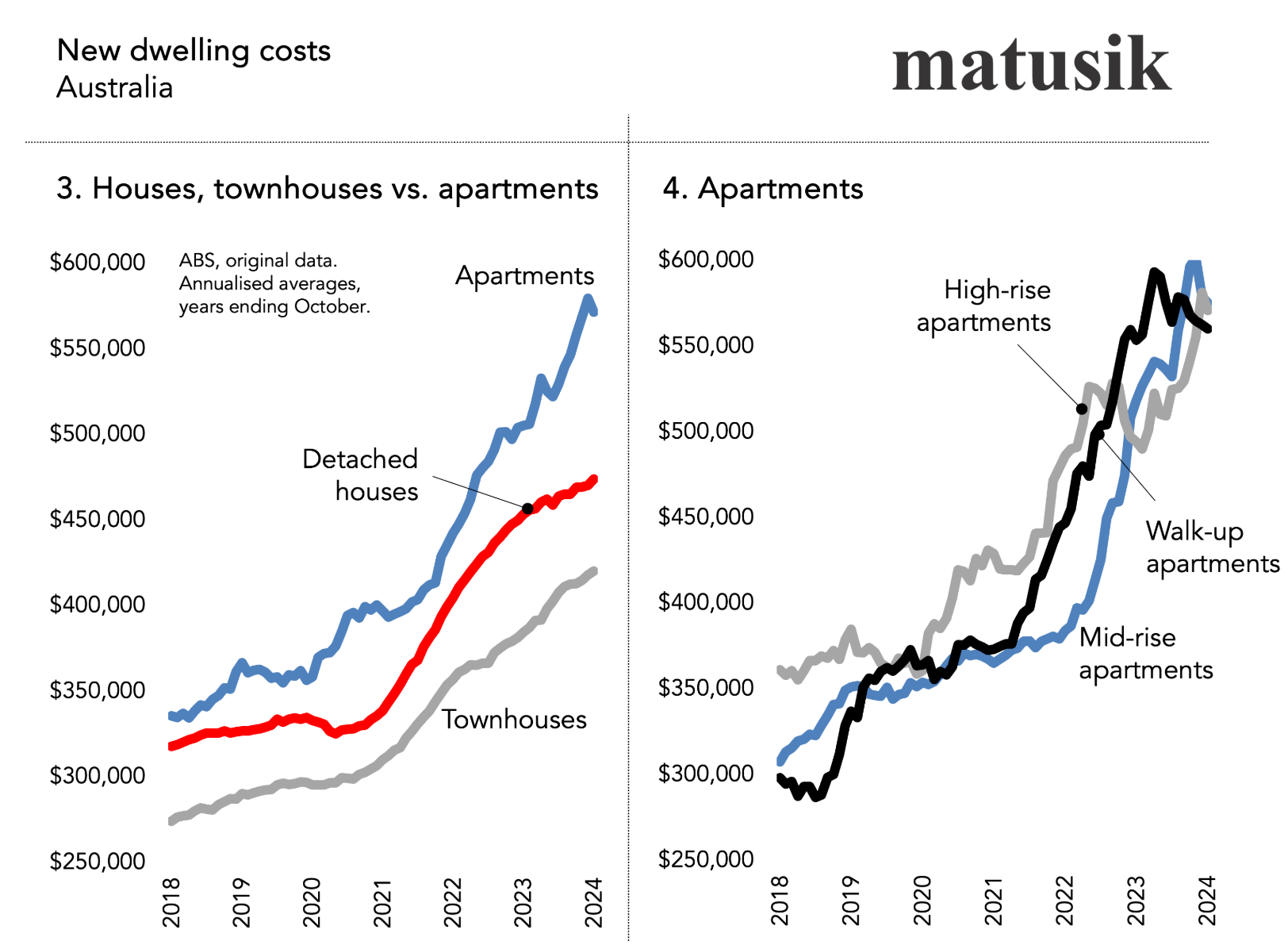
“Whilst all building costs have risen over the past five years, new apartment builds—regardless of type—have seen a rapid escalation in construction costs”, notes Matusik.
“There are many reasons why, including union-related thuggery, a shortage of skilled labour and limited interest from tier one and two builders. Also there aren’t enough of these builders to go around these days”.
“Moreover, many new apartment projects—sell-off plan – but don’t actually get built”, he said.
Prohibitive construction costs explain why apartment construction rates have collapsed, with overall annual approvals crashing 52% from the peak.
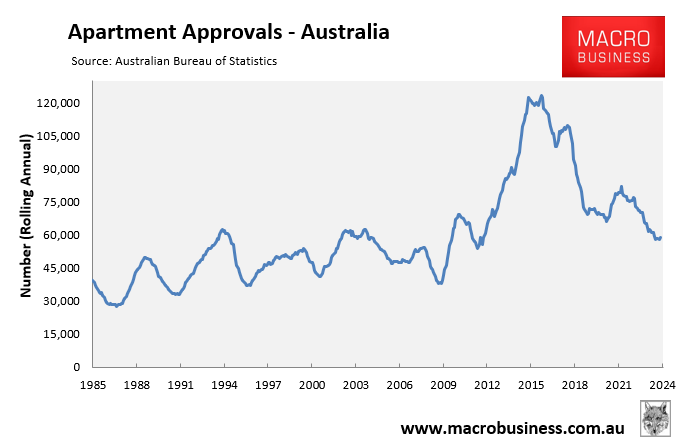
High-rise apartment approvals have plunged more sharply, falling more than 60% from the peak.
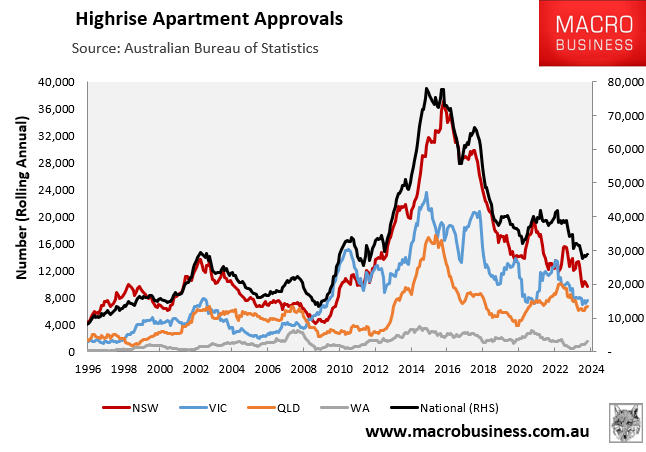
In October 2024, CBRE predicted that Australia would only build around 50,000 units per year between 2025 and 2029, around half the level of the 2017 high.
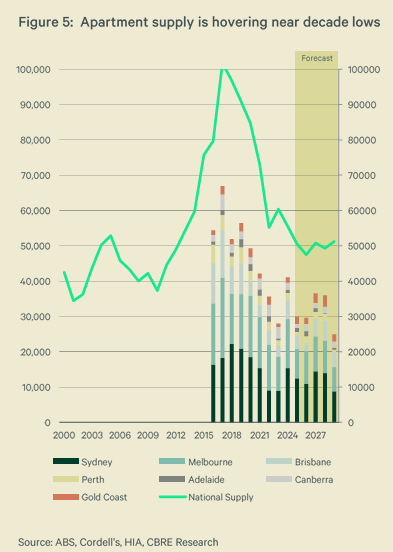
CBRE argued that apartment prices needed to catch up with rising construction costs in order to make it feasible for developers.
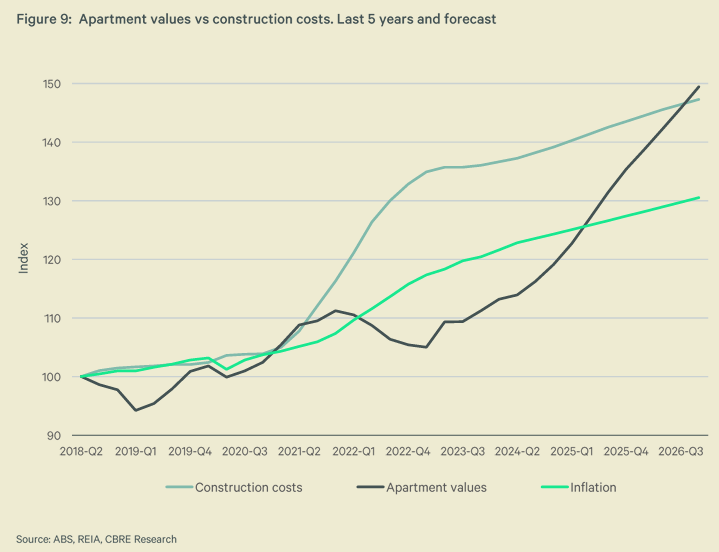
Separately, Charter Keck Cramer stated that apartment prices for new and established stock needed to rise by around 15% to entice development. However, this would price many would-be buyers out.
Another issue that apartment Yimbys frequently overlook is the degradation of living standards that come with high-rise apartment living.
Last week, the ABC published a report on the inherent compromises Australian families are making to live in high-rise shoebox apartments.
The ABC noted that the number of occupied apartments has grown by nearly 60% since 2006, and the recent growth rate has outpaced townhouses and houses.
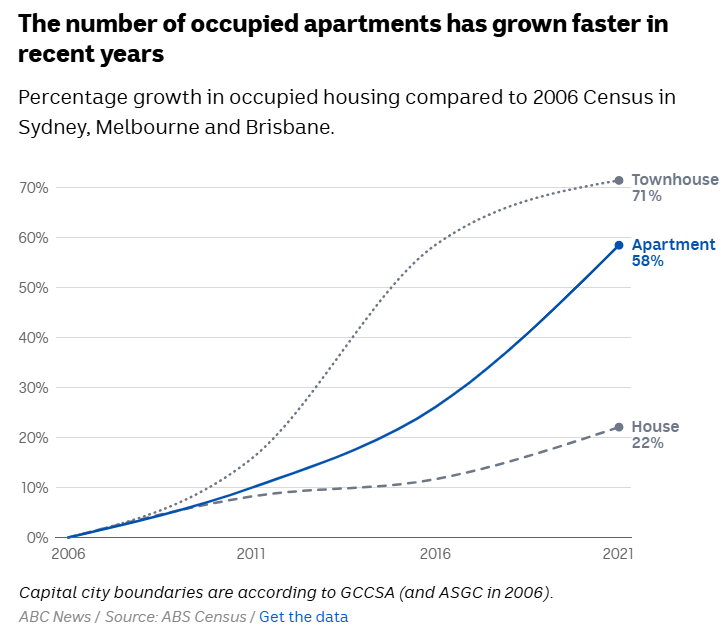
However, “research highlights an investor-driven proliferation of small, dark and stuffy apartments”.
Around 5% of families in Melbourne and Brisbane live in apartments, whereas the figure is 20% for Sydney families.
“We interview people who store food in the bedroom, under the bed, down in the storage cage”, Associate Professor Fiona Andrews, a Deakin University academic, said.
Dr Andrews said many apartments serve only a narrow set of needs.
“The current apartment stocks really seem to be tailored to people who are just moving through that apartment — not really seen as a home”, she said.
Escalating construction costs remain a key barrier to building larger, high-quality, family-friendly apartments.
Three-bedroom apartments comprise only a small fraction of the nation’s apartment stock.
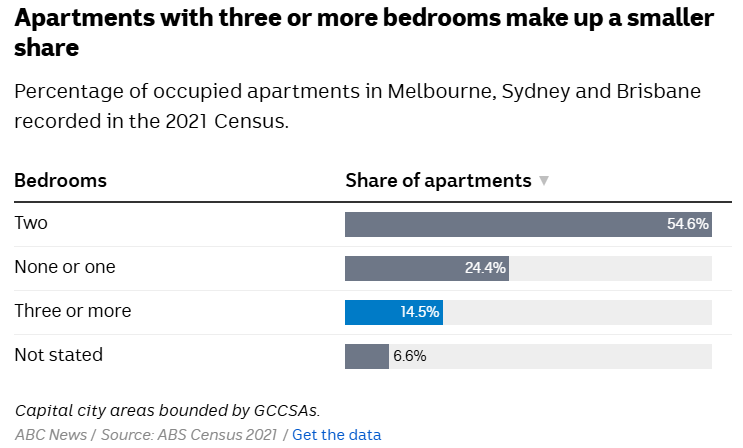
“Three-bedroom and four-bedroom apartments have more square metres”, Stuart Ayres from the Urban Development Institute of Australia’s (UDIA) New South Wales chapter said.
“You just multiply that additional number of square metres by the cost per square metre and you have a more expensive dwelling”.
UDIA warned that the current economic conditions have made it harder to deliver family-friendly apartments, noting that three- and four-bedroom apartments are “quite uncompetitive compared to existing detached housing stock”.
“The feasibility for many multi-storey apartment buildings is just not there under the current conditions”, Ayres said.
The notion that by building many apartments, affordability and livability would improve is delusional.
There are also legitimate concerns surrounding the build quality of new apartments and excessive strata fees.
The reality is that Australia’s major cities would not need to transform into high-rise slums if the federal government only grew the population slowly via moderate levels of net overseas migration.
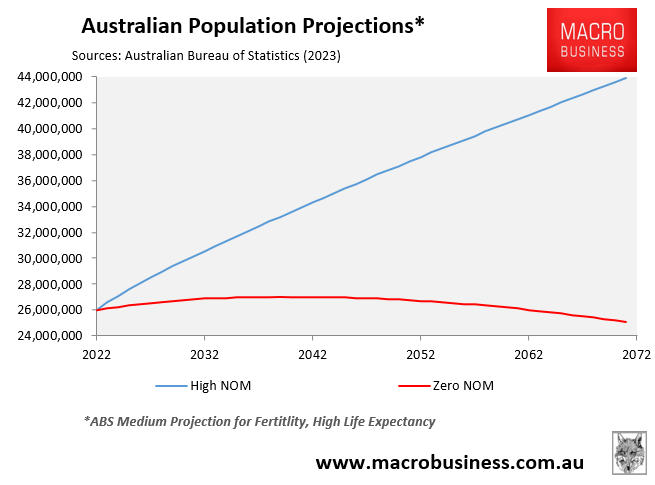
The cheapest, easiest, and fastest solution to Australia’s housing supply problem is to reduce net overseas migration to a level well below the capacity to supply housing and infrastructure.
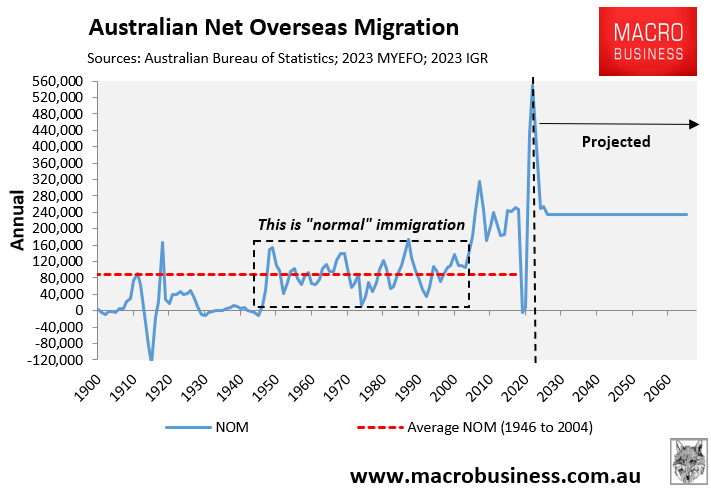
Australia’s housing crisis is a problem of excessive population demand, not insufficient supply.
Future Australians should not be forced to live in expensive shoeboxes in the sky.

